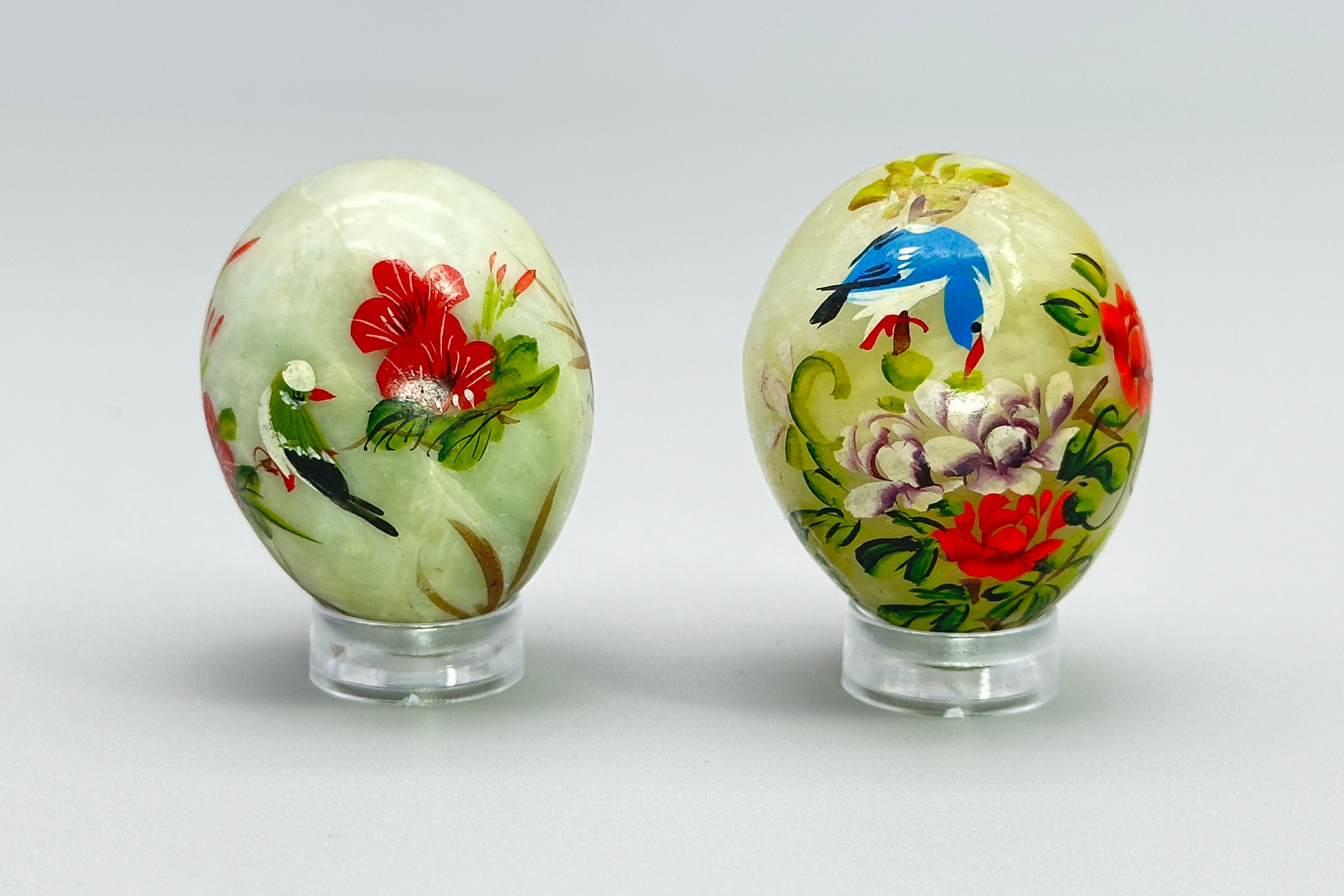Chinese & Japanese Works of Art
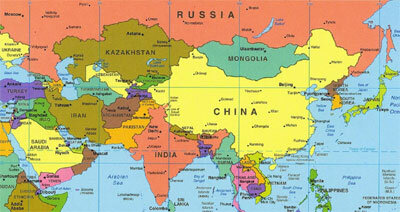
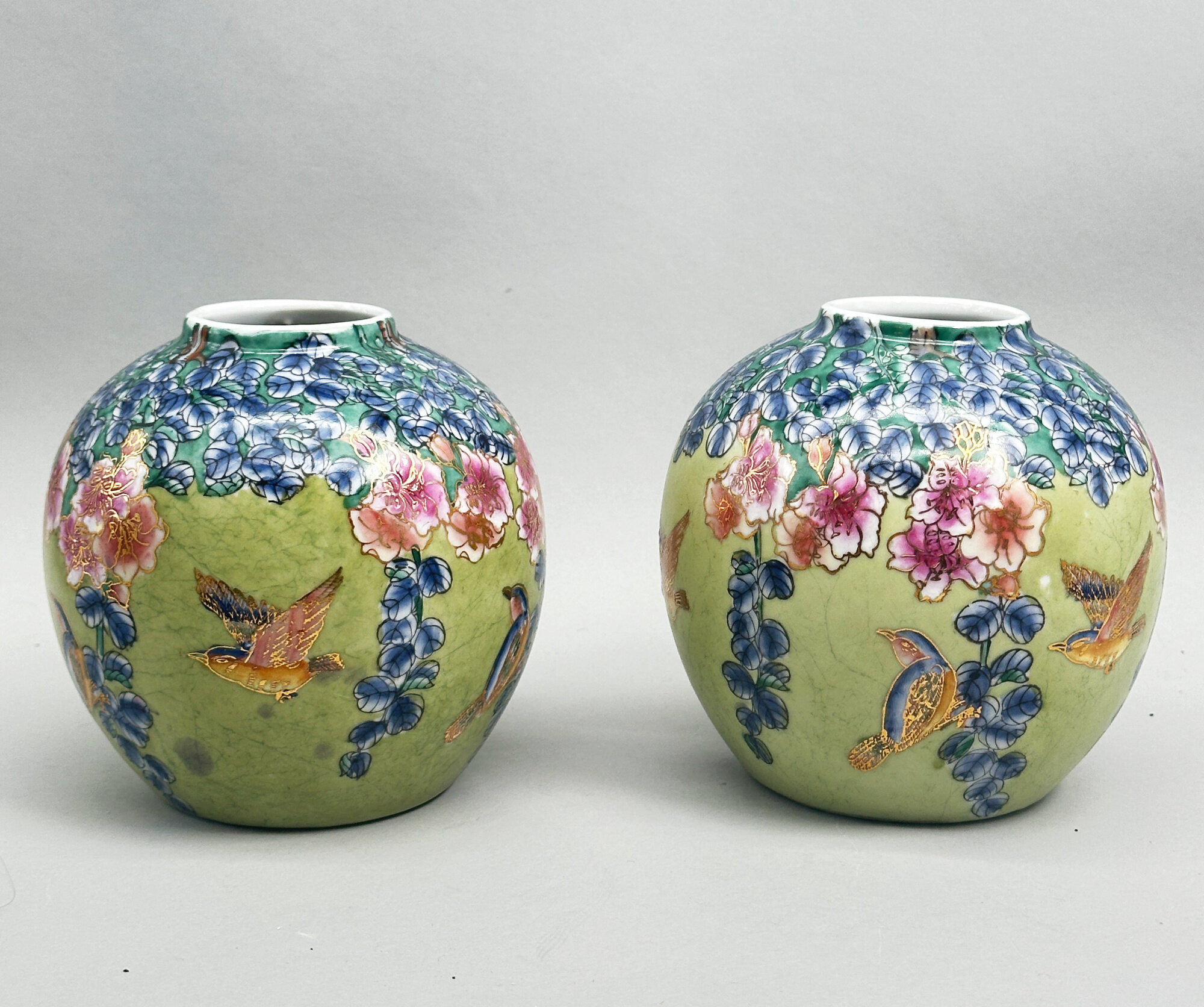
Pair of Chinese Ginger Jars decorated Birds and Flowers, late C20th
Price: £45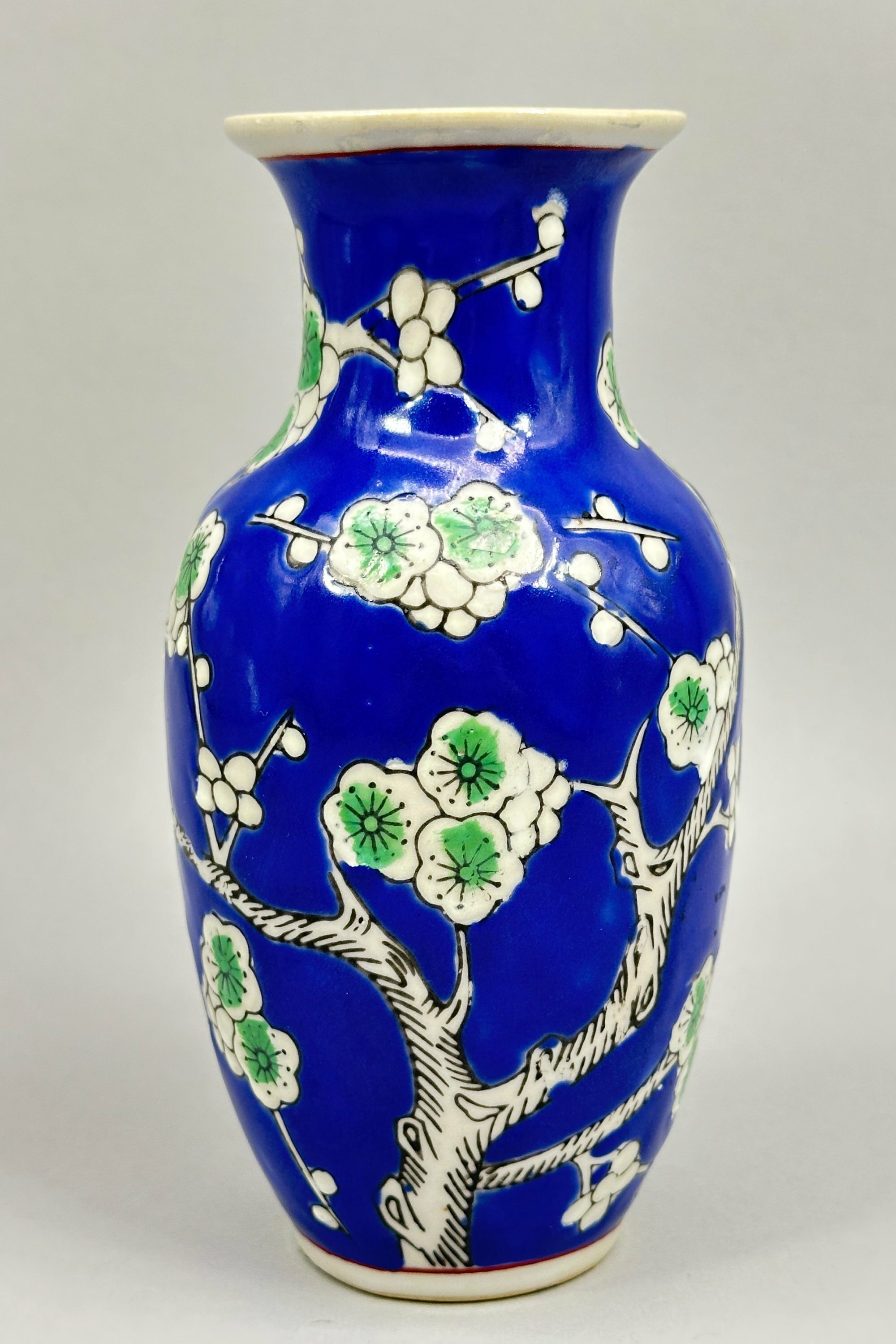
Chinese blue ground Vase decorated Prunus, late C20th
Price: £25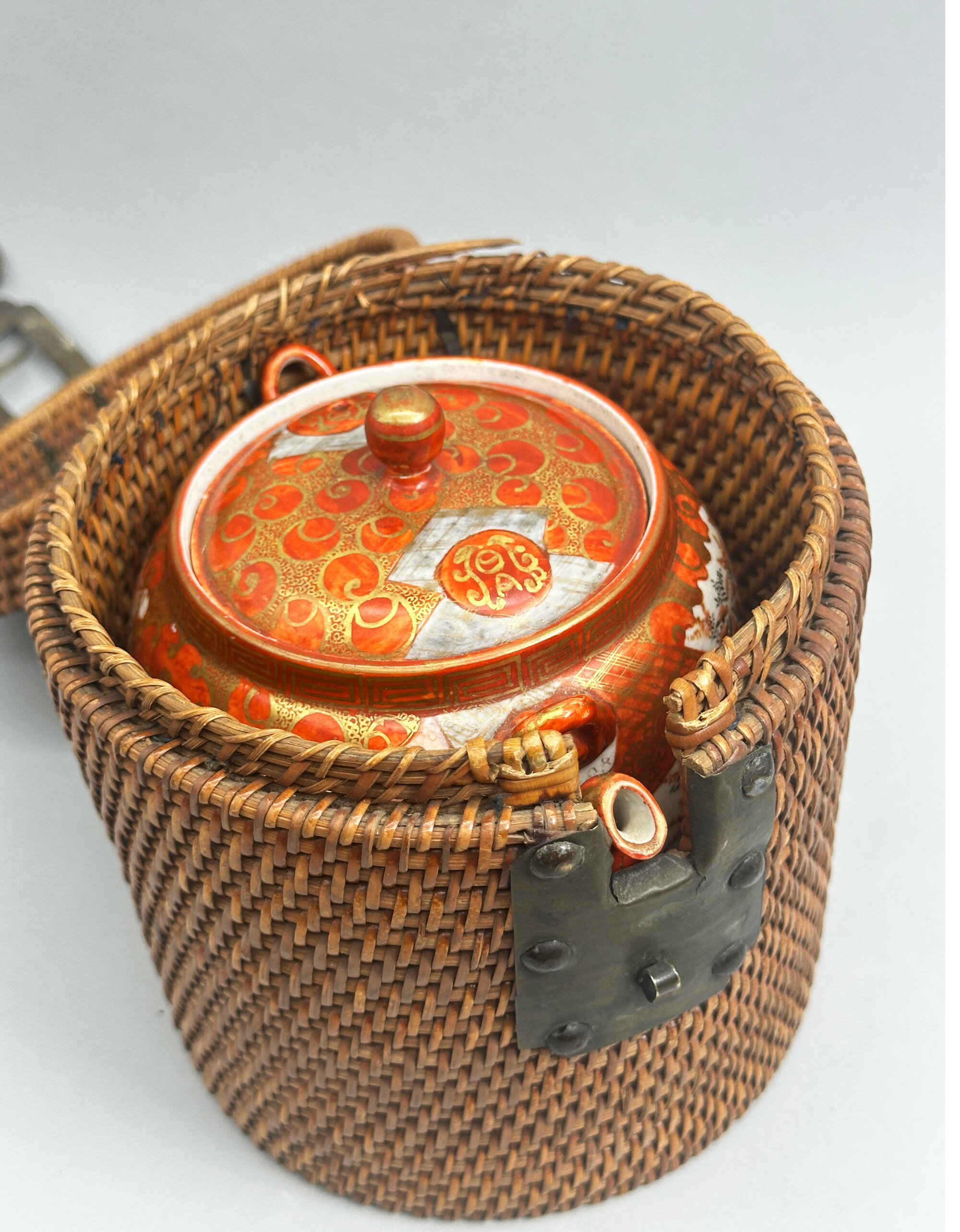
Japanese Kutani Teapot in a carrying Basket, circa 1900
Price: £45Kutani (the word means 'nine valleys') porcelain was made at various factories in the former Kaga province of Japan. The earliest pieces were in a completely different style employing a palette of colours emphasising green, the so called 'Ko Kutani'. Production of this ceased around 1730, and manufacturing was not revived until the early nineteenth century when the more familiar colourings of iron red and gold were introduced. Vases, bowls and plaques are found in this style but also teapots of which this is a typical example. The decoration is of birds and flowers on a faintly craquelure glaze ground and the lid has a complementary ‘brocade pattern’ design. The base has a two character mark reading ‘ku’ ‘tani’ as is often found. The basket is of tightly woven wicker with the metal fitments as described and is probably Chinese in common with many similar examples, although the Japanese did, of course, have a basket weaving tradition of their own. Slight damage means that the ensemble has to be of decorative value rather than practical use but it remains an interesting and entertaining souvenir item from the orient.
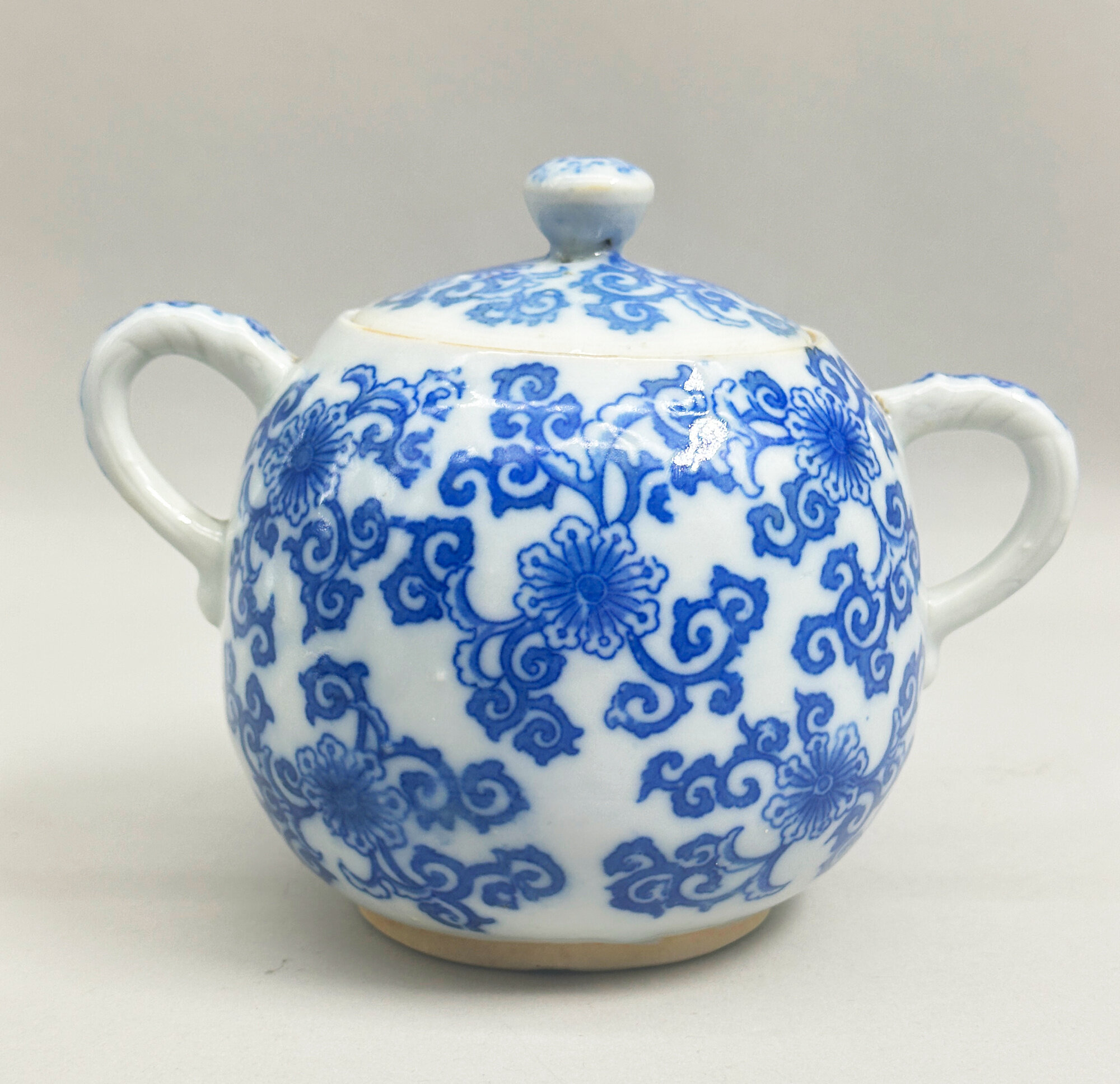
Japanese Blue and White Sugar Bowl and Cover, first half C20th
Price: £25
Chinese lotus form Water dropper, C20th
Price: £25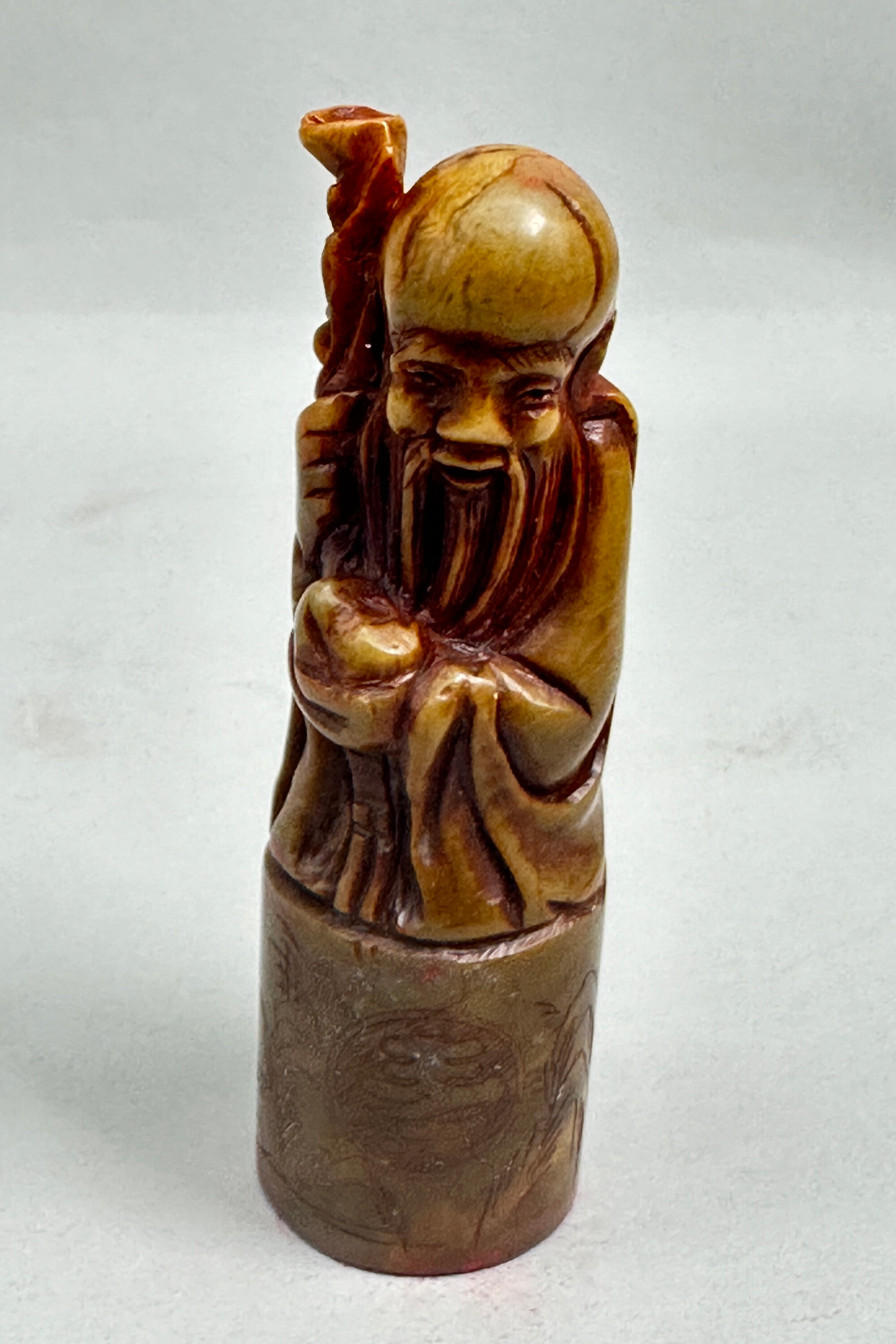
Chinese Soapstone Seal with Shou Lao, C20th
Price: £45
Chinese Shoushan Soapstone Seal with the characters A.H., C20th
Price: £45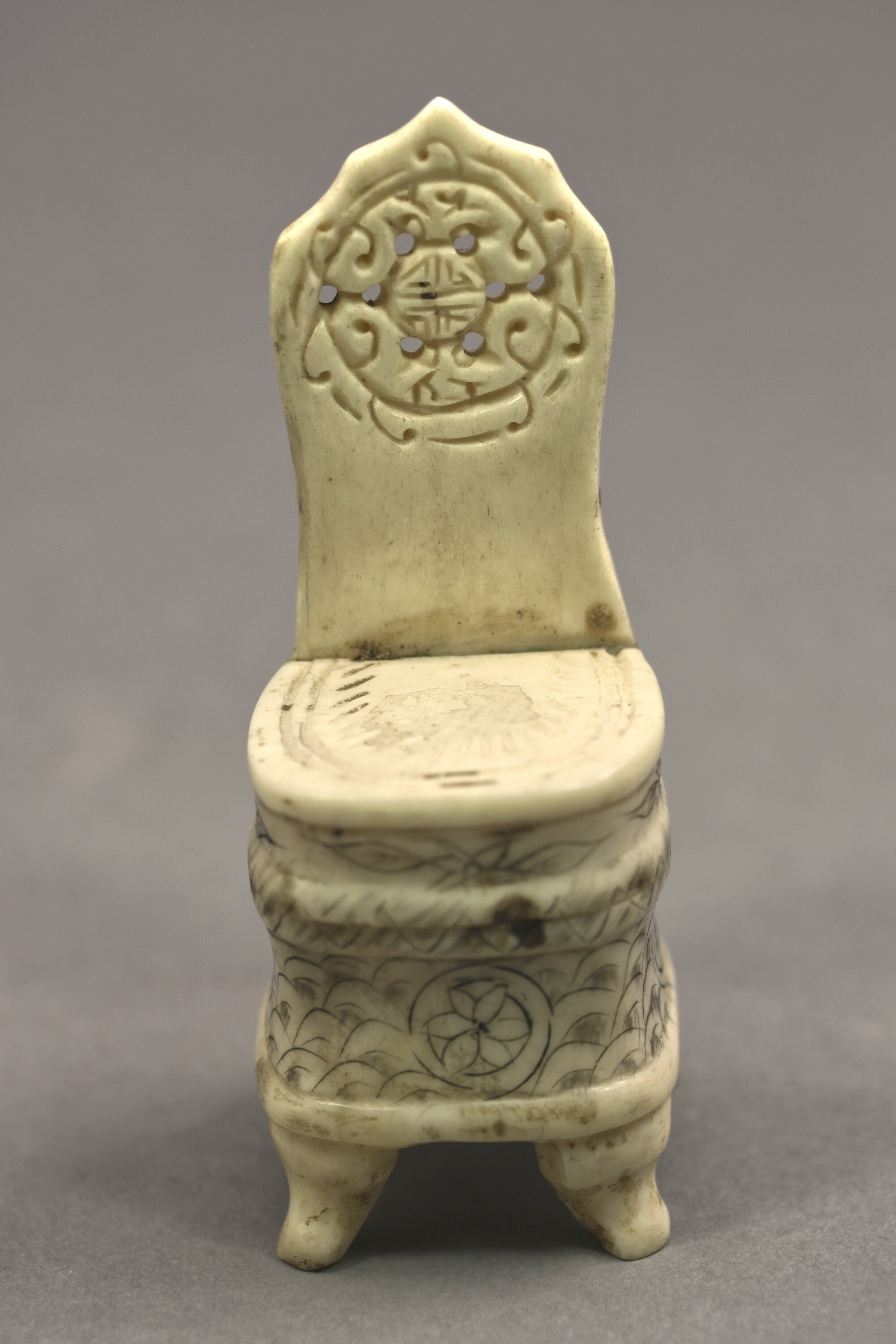
Chinese Bone Inkwell in the form of a Chair, early 20th century
Price: £25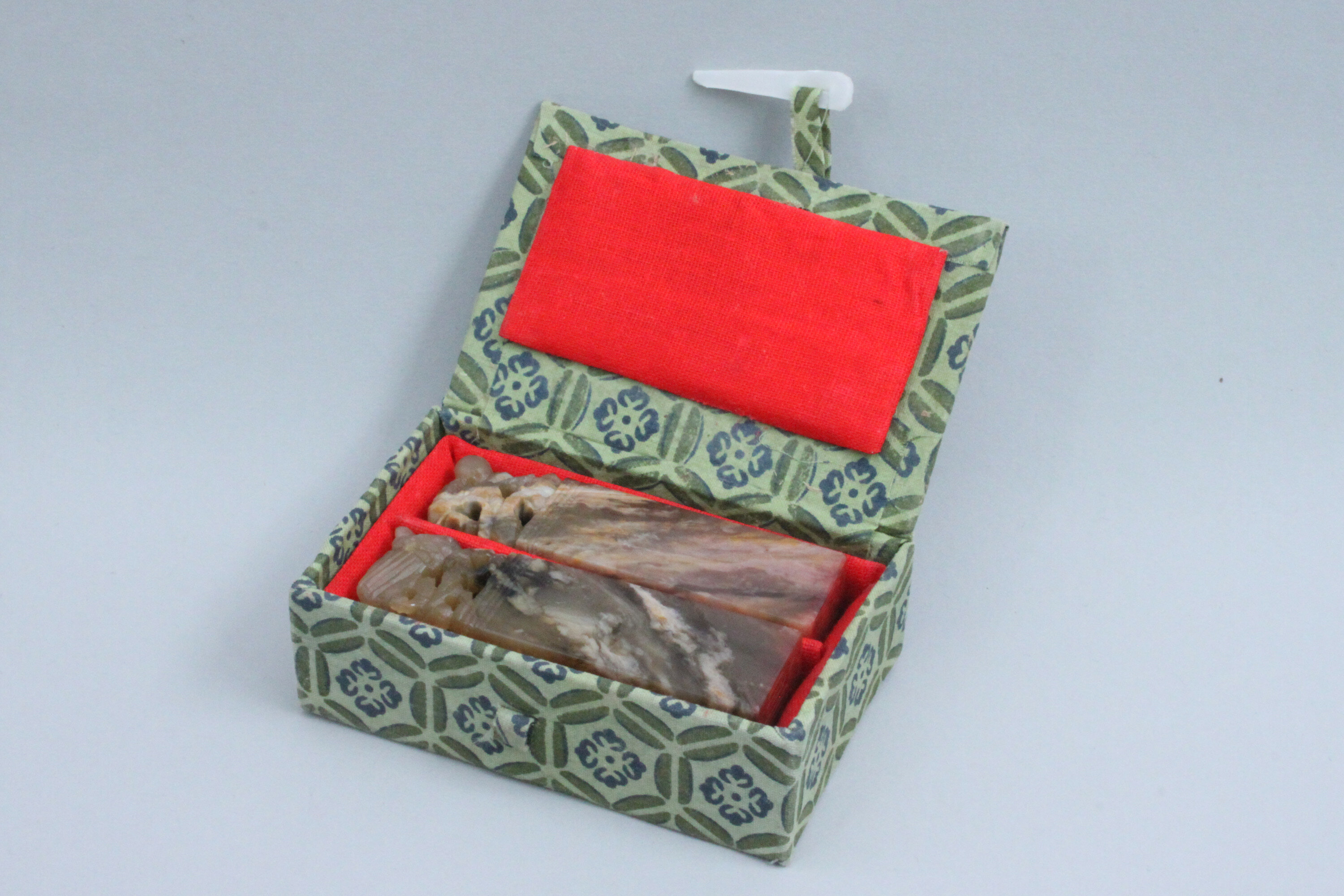
Pair of Chinese Soapstone Seals in a fitted box, C20th
Price: £45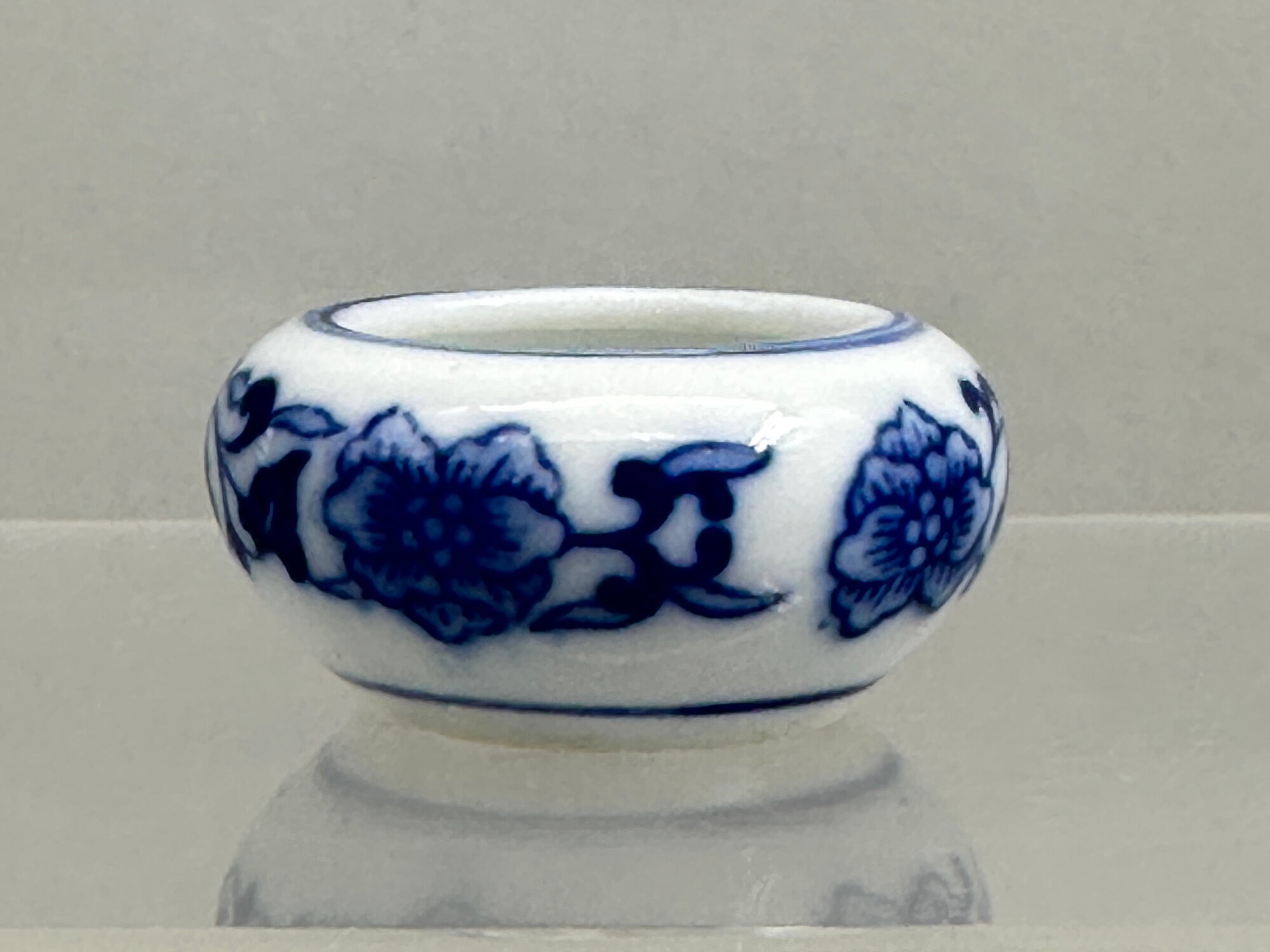
Small Chinese Blue and White Brushwasher, C20th
Price: £25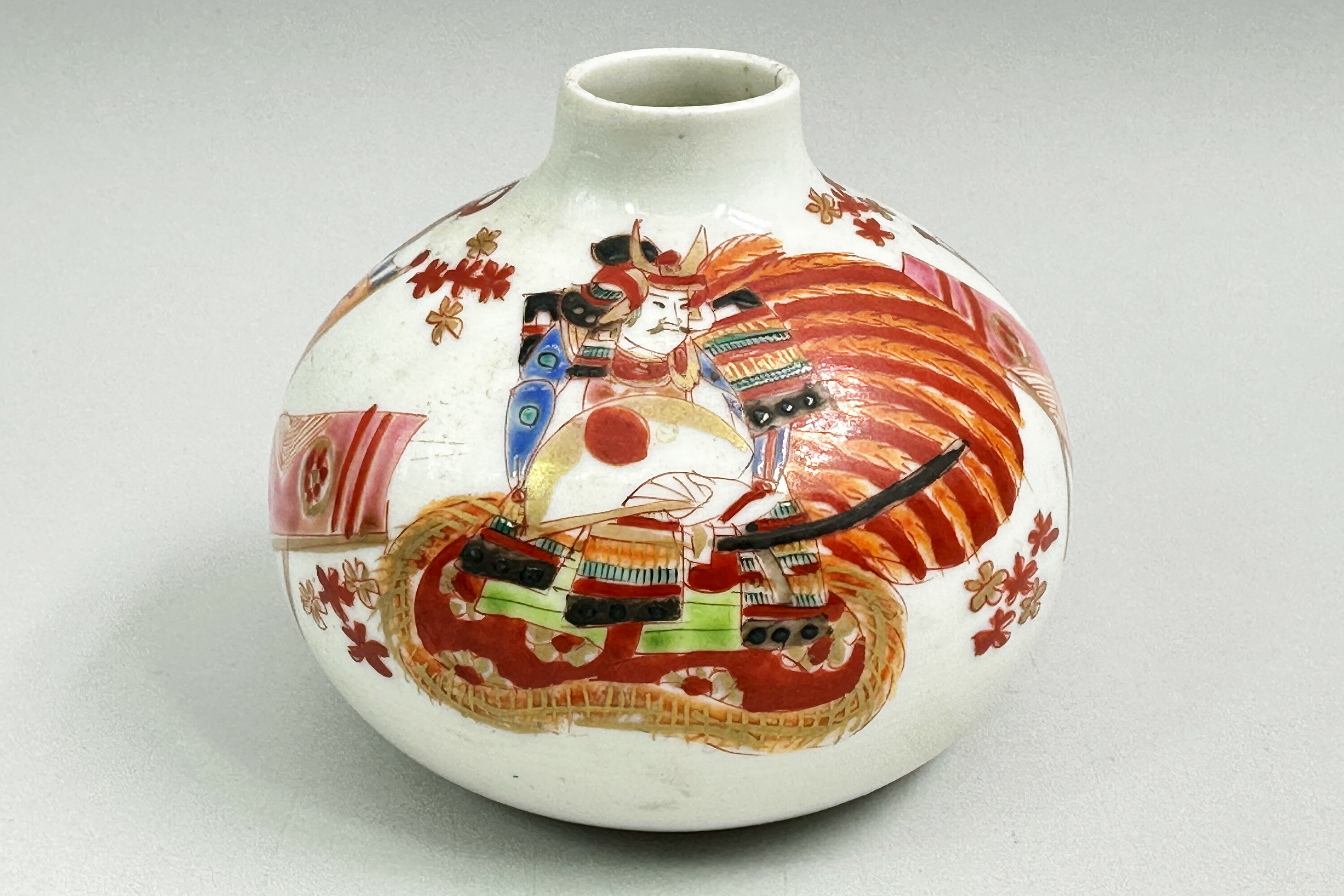
A Japanese Hichozan Shinpo Brushwasher circa 1880
Price: £25
Chinese Blue and White Vase decorated with flowering Prunus circa 1900
Price: £55Flowering prunus or plum blossom is one of the most iconic of the decorative designs used by Chinese potters and first appears in the Kangxi period (1662-1722). Kangxi ginger jars in the pattern were highly prized by Victorian collectors with one example, the legendary ‘Huth’ jar, fetching 5900 guineas, a little over £6000, at auction in 1905, a price equivalent to over a quarter pf a million pounds today. The tree symbolises perseverance and renewal and was usually shown against a pattern of ‘cracked ice, representing the end of Winter and the beginning of Spring. Branches of plum blossom convey the ‘Five Blessings’ : longevity, wealth, health, love of virtue and a peaceful death. The number five was an auspicious number for the Chinese and is reflected in the five petal form of the prunus flower.
Once evolved, the design was continuously repeated by Chinese potters and is even produced today. Many of late nineteenth century pieces display a rather more slapdash interpretation of the pattern as here where the ‘cracked ice’ of the eighteenth century pieces is replaced by the repeated brush strokes of a blue wash ground and the painting of the tree itself is sketchy. The style of decoration and the paste of the foot indicate a circa date to around 1900, but this modest interpretation of centuries old pattern still possesses a charm of its own.
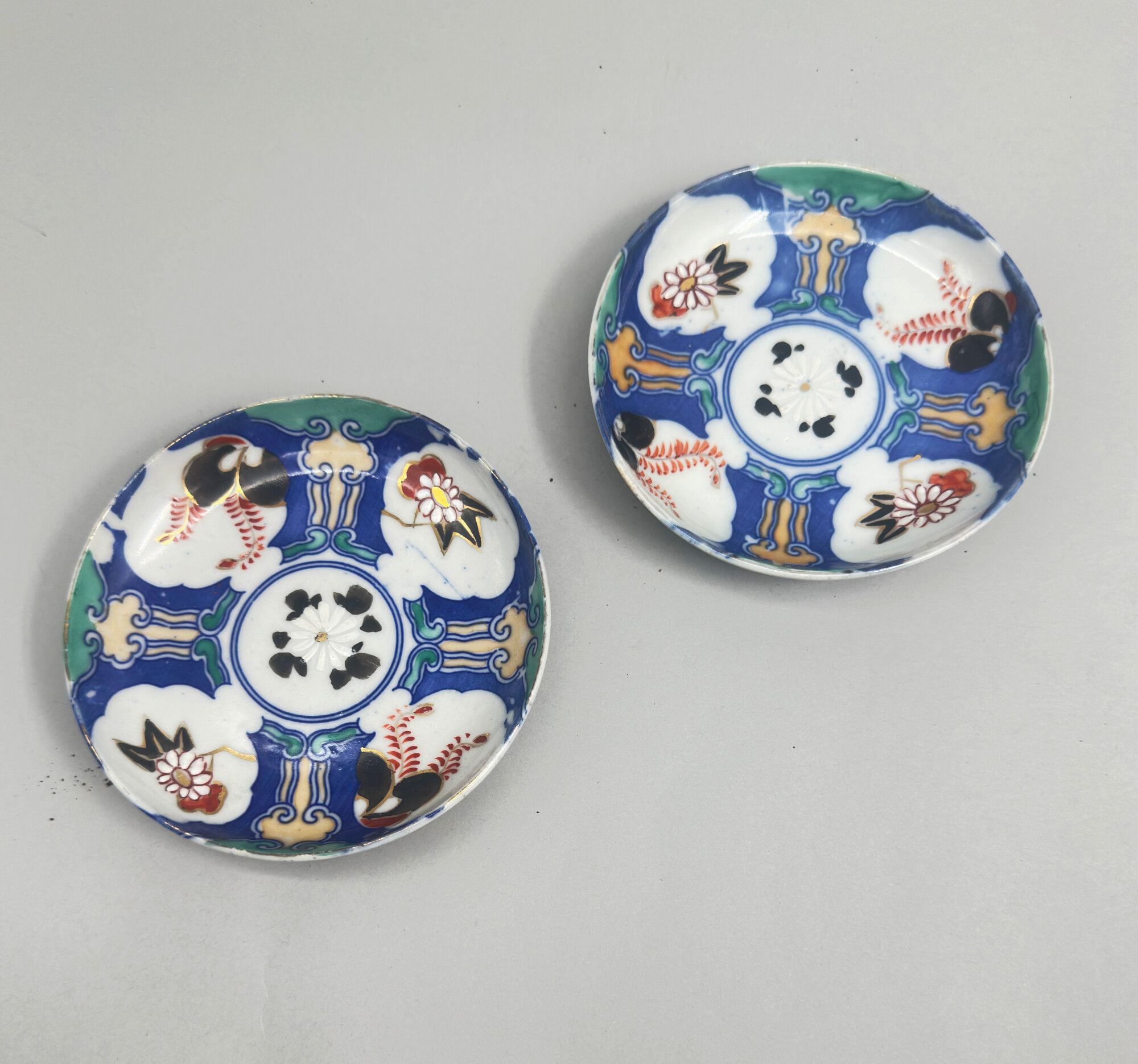
Pair of Japanese Arita small Dishes circa 1880
Price: £40The town of Arita in the former Hizen Province, northwestern Kyūshū island, was a major centre for the production of porcelains in Japan. Best known for blue and white pieces it also produced polychrome wares as well, including the familiar imari colourings. While similar to Imari, the wider palette of colours used here is usually termed ‘Arita’ and the decorative appeal of the style is clear. These bowls probably come from an original set of five and with slightly coarser decoration than usual were probably made for the domestic market. The paste of the foot implies a dating to the Meiji era (1868 - 1912) probably around 1880.
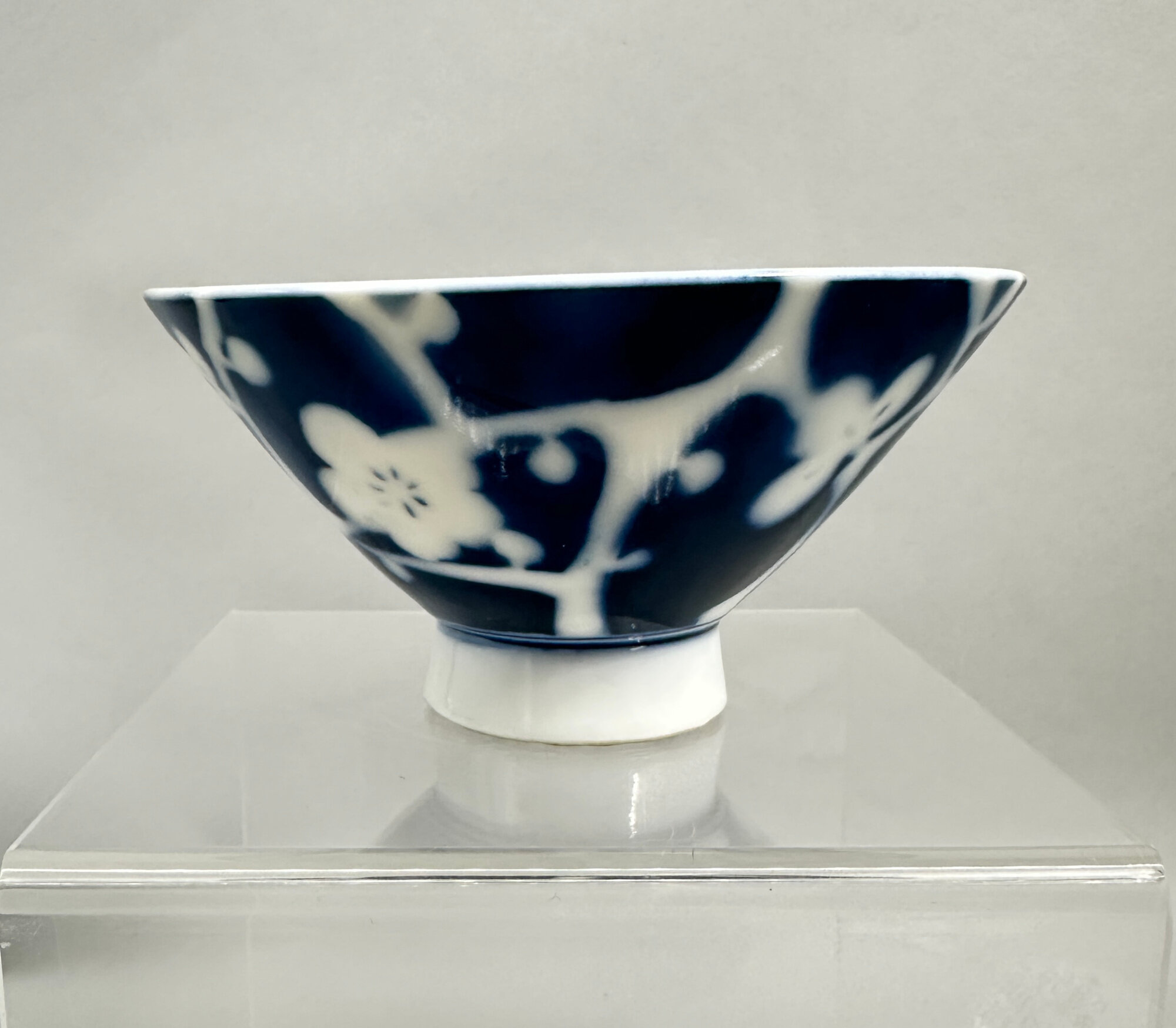
Japanese blue and white hat shape small Bowl with flowering prunus, C20th
Price: £25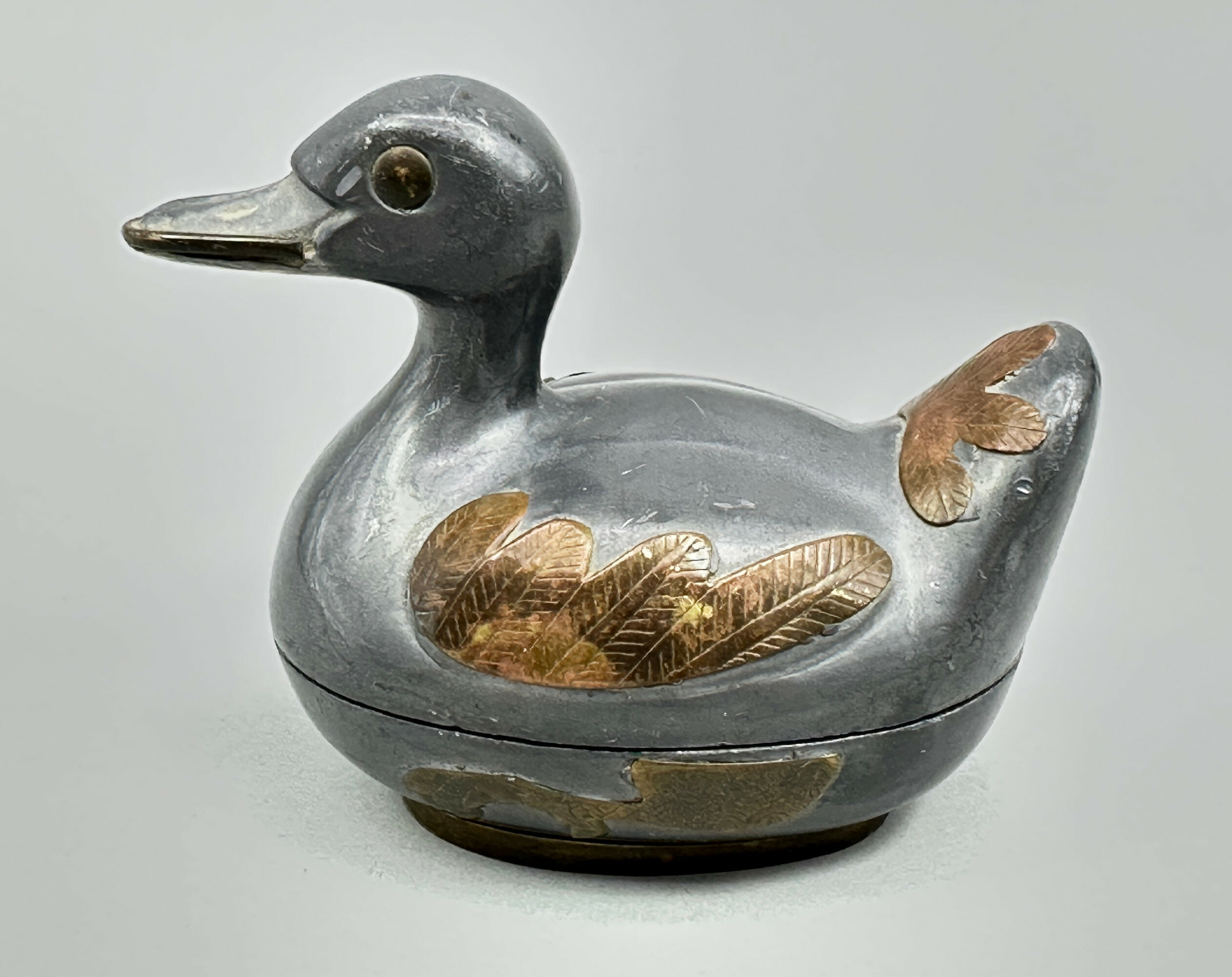
Pewter and brass box and cover in the form of a Mallard Duck, Gatco, Hong Kong, 1960s
Price: £25
Japanese Kutani Part Tea Service circa 1920
Price: £75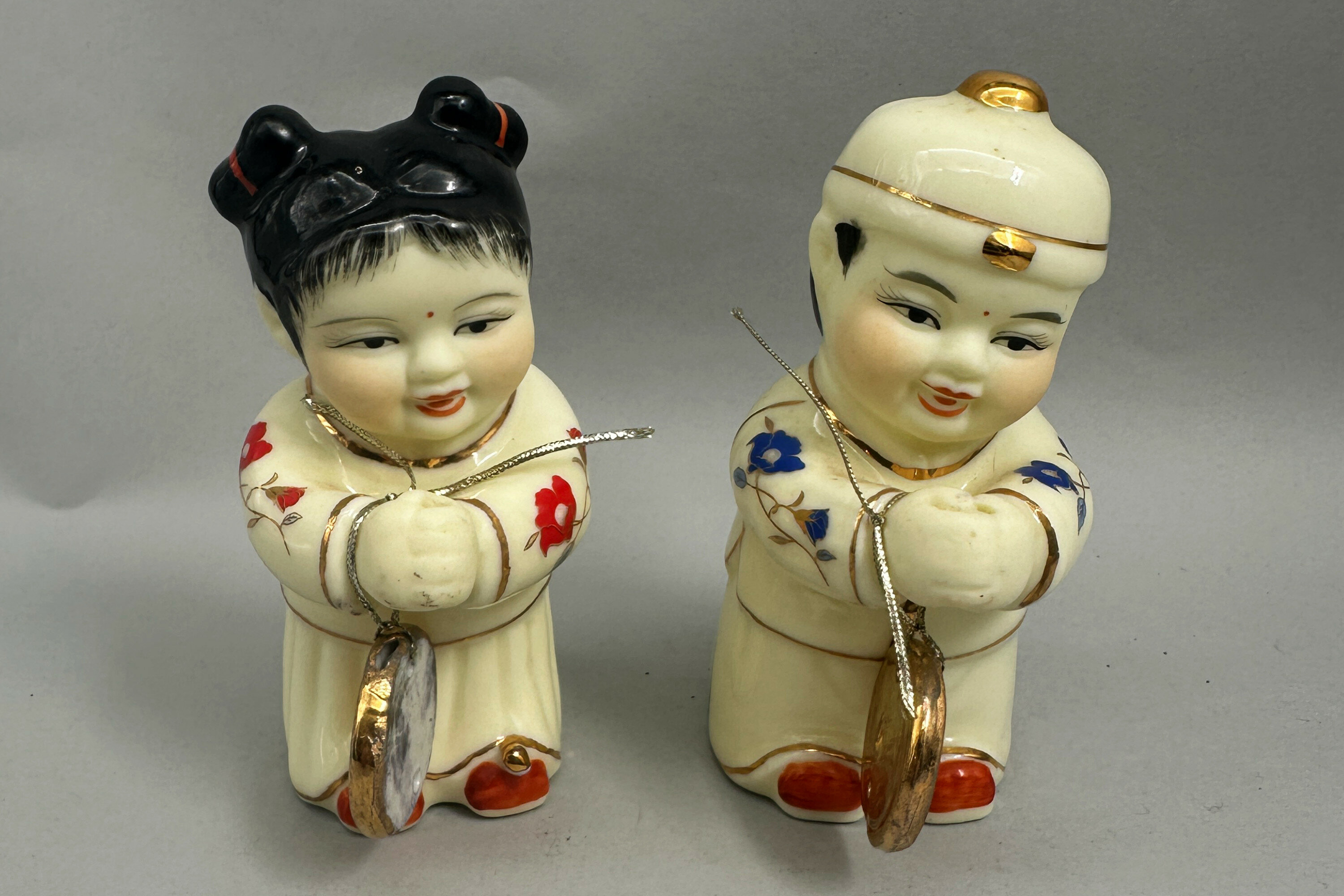
Decorative pair of Chinese ceramic figures of children, Yunu and Jintong , late C20th
Price: £45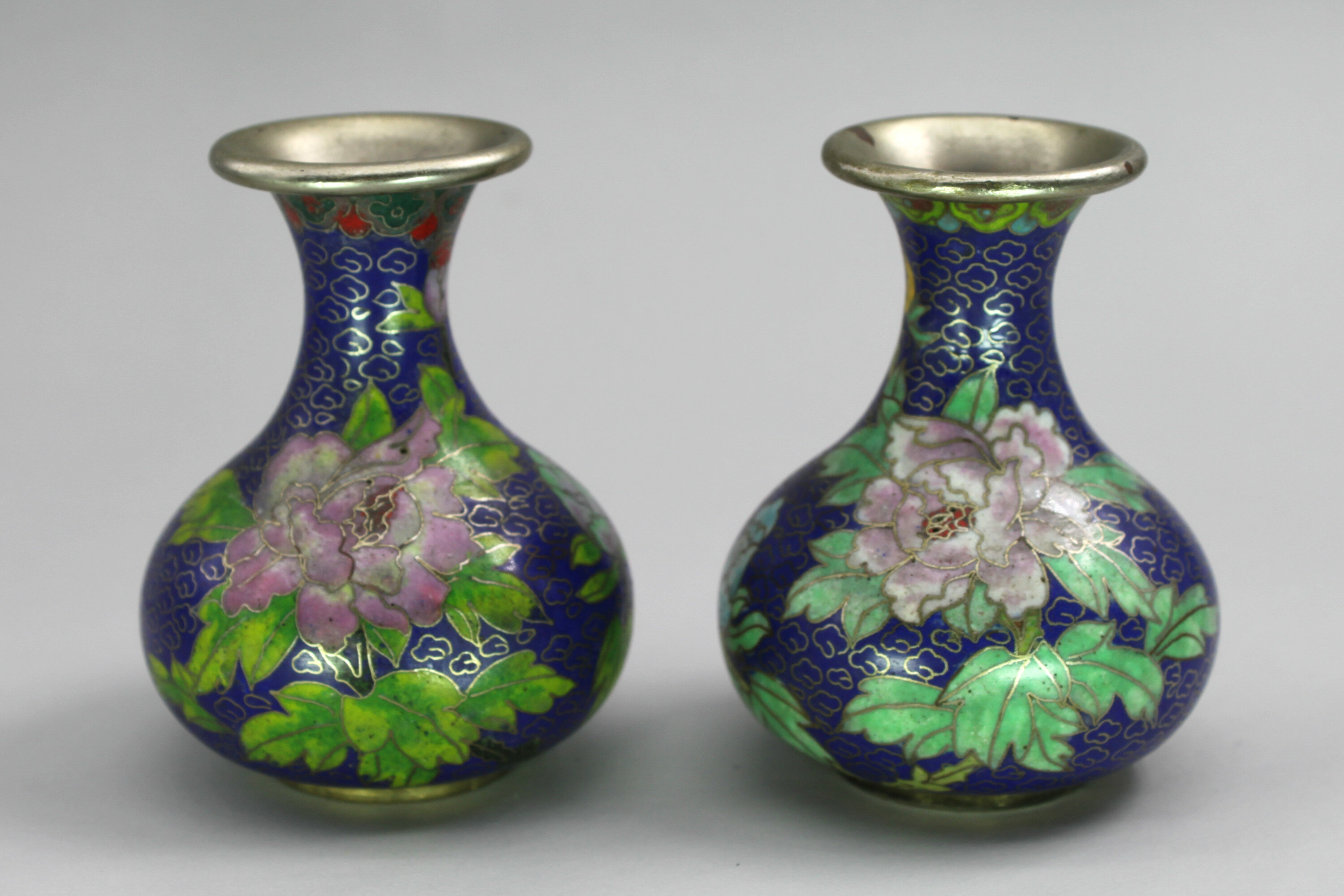
A Matched Pair of Chinese Cloisonne Bottle form Vases circa 1900
Price: £25